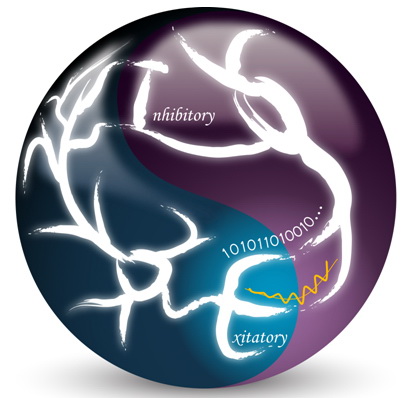On March 22, "PLoS Biology" published the latest achievements of the Shu Yousheng research group of the Institute of Neurology, Shanghai Institutes for Biological Sciences, Chinese Academy of Sciences: a new mechanism for the cerebral cortex to maintain excitement and suppress homeostasis, namely neurons The level of membrane potential can regulate the intensity of feedback inhibition. The work was completed in cooperation with Zhu Jie, Jiang Man, Yang Mingpo and Hou Han. In the same period, PLoS Biology published a comment entitled "Finding Balance in Cortical Networks", which introduced this work specifically.
The normal function of the cerebral cortex depends on the dynamic balance of excitement and inhibition in the cortex. In cortical neural networks, excitatory pyramidal neurons and inhibitory interneurons form local neural circuits through synaptic structures. These circuits are the structural basis of the excitatory-inhibitory balance in the cortex. It is generally believed that the action potential (digital signal) issued by excitatory neurons is transmitted along the axon to the presynaptic membrane, and the excitatory post-synaptic potential (EPSP) is generated on the inhibitory neurons through synaptic transmission. By issuing thresholds, inhibitory neurons will generate action potentials and produce inhibitory post-synaptic potentials (IPSP) on their dominant excitatory neurons, thereby feedback suppressing excitatory neurons. The electrical activity state of the cerebral cortex is closely related to behavior, so how does the cortex maintain the dynamic balance of excitation-inhibition under different electrical activity states (that is, when neurons are at different membrane potential levels)?
Zhu Jie et al. Applied patch clamp technique to record multiple cortical neurons simultaneously on isolated brain slices, and found that feedback inhibition is regulated by the membrane potential of presynaptic pyramidal neurons: the subthreshold membrane potential depolarization of pyramidal neurons Chemical (increased excitability) can enhance the double synapse IPSP (inhibitory enhancement) caused by its action potential on the postsynaptic pyramidal neurons. Further experiments proved that the enhancement of double-synaptic IPSP is mediated by inhibitory interneurons: presynaptic depolarization increases the action potential to induce EPSP (membrane potential-dependent analog signal) on inhibitory interneurons, and It increases the probability and number of action potentials, thereby mediating the enhancement of IPSP. This membrane potential-dependent change in EPSP and IPSP is mediated by axon D-current (a potassium current that is rapidly activated but slowly inactivated).
The study revealed a new mechanism by which the cerebral cortex dynamically maintains the balance of excitement and inhibition in its network. Because the destruction of this balance in the cortex is related to neurological diseases such as epilepsy and schizophrenia, this research can provide new ideas for the clinical treatment of related diseases.
The research was supported by projects from the Chinese Academy of Sciences, the Ministry of Science and Technology, the National Natural Science Foundation of China, and the Shanghai Municipal Science and Technology Commission.

Tai Chi diagram shows: Excitatory neurons and Inhibitory neurons in the cerebral cortex are maintained in the network through mixed digital signals (101011 ...) and analog signals (membrane potential-dependent modulation signals indicated by yellow curves) Dynamic balance of excitement and suppression. The picture was conceived and designed by Hou Han.
Wall Bathroom Cabinet,Bathroom Cabinet Set,Bathroom Medicine Cabinet,Bathroom Cabinet
DUOBUY TECHNOLOGY SHANDONG CO., LTD. , https://www.dbtfurniture.com